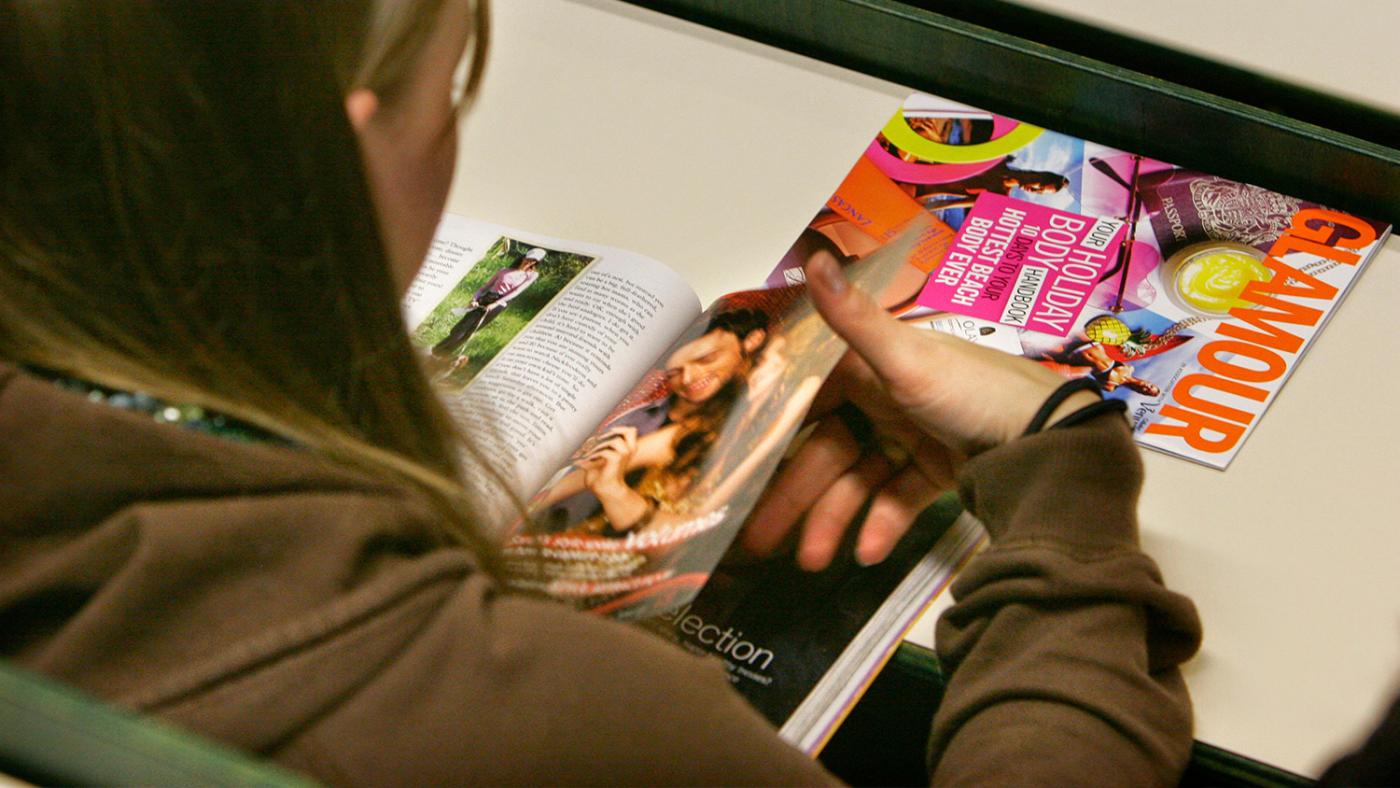Attention span myths
Is it true that students are less able to concentrate than before?

Your thoughts can't help but wander, even though you're trying hard to focus on the lecture. You try to type along with the teacher, but the next thing you know, you're staring at your classmate's screen, eating a sandwich, and occasionally picking up your phone to see if any interesting messages have arrived.
Many people are convinced that young people can't pay attention to anything for long these days, especially after a Canadian study claimed that young people have a shorter attention span than goldfish.
Steven Raaijmakers also gets distracted by his smartphone sometimes. ‘I'll pick up my phone just to scroll for a little while and end up spending twenty minutes on that.' Raaijmakers has a PhD in self-regulated learning and now works as an educational advisor at Utrecht University. He trains other teachers, provides educational advice, and ultimately improves education.
Raaijmakers recently came across an interesting graph while reading Activerende Didactiek (Activating Didactics), a book by Lia Bijkerk. ‘It states that attention decreases throughout the lecture.’ He got curious about the data the graph was based on. ‘After digging and digging and digging some more, I finally found a book from 1967,’ he recollects. As it turns out, the graph was made by a teacher after observing his own students and how many notes they took during lectures. ‘However, he only looked at how many notes students took, assuming that this said something about their attention.’ The statement was thus not substantiated enough, and Raaijmakers couldn't find any other studies besides this one. ’There are not enough studies accurately estimating how long people can stay focused on something.’

Photo: DUB
Attention span myths
According to Raaijmakers, when talking about concentration, 'fifteen minutes' is the magic number people tend to use, but that's where the great myth lies: the idea that our attention span is comparable to a bucket of water being emptied up slowly. One person's bucket will be empty after eight minutes, while another person's bucket will be empty after twelve. Another recurrent myth is that people's attention spans are shrinking. He reassures us that 'our so-called buckets of attention are not decreasing.'
Raaijmakers explains that both myths are untrue because our attention span depends on external factors. There is no such thing as a person who can always stay focused for longer than another. ‘It all depends on what you're interested in. Someone will stay excited throughout an entire lecture about the Second World War but dread a lecture about the human body, for example.’
According to him, the only thing that is not a myth is the existence of an attention span. ‘Movie directors work to make their films retain your attention the whole time, but many external distractions make it hard to stay focused for that long.'
Attention problem
Though Raaijmakers does not think our attention spans are shrinking, he does believe we are witnessing an attention problem. ‘There is more and more information, and we are constantly looking for novelty. We have more distractions now than before. TikTok videos are designed to grab your attention and try to hold it for as long as possible, which is not conducive to attention span.’ So, there is a difference between attention directed by external factors, such as TikTok videos, and attention we direct towards something ourselves, such as reading a textbook.
A good lecture is ping ping-pong match between two parties. ‘The teacher explains something while the student ensures that they are not distracted and come up with questions for the end of the class.’
Five tips for students looking to stay focused, by Steven Raaijmakers
1. ‘Our attention naturally wanders to movement. Moving laptop screens can be very distracting. Sit in the front row for optimal concentration.’
2. ‘If you want to concentrate better in class, you can also set the goal of asking a question at some point. This way, you will have to pay attention to what is being said so that you can ask that question.'
3. ‘Set barriers to prevent yourself from picking up your smartphone. A small barrier would be putting it in your bag, while a bigger barrier would be using apps that block your phone from accessing other apps. An even bigger barrier would be leaving your phone at home. Students usually argue that they can't leave their phones at home because of two-step verification, but if you are well prepared and already have the syllabus saved on your laptop, you won't need your phone.’
4. The Pomodoro technique is a popular method to stay focused for longer. It works as follows: you set a timer for 25 minutes and then try to fully focus on a task. Once those 25 minutes are over, you can take a 5-minute break and then set the timer for another 25 minutes. Though this works well for some people, for others, it takes quite some time to focus again after a distraction. So, if you are still enjoying yourself after 25 minutes, just keep going. You will notice when you need a break.’
5. 'Rituals can help you focus too. For example, first you get your coffee, then you get things ready, and then you answer some texts. Only then is it time to begin studying. If you do this the same way every time, it will be easier to focus on studying.’
Four tips for teachers looking to keep students focused, by Steven Raaijmakers:
1. ’While the 15-minute attention span does not exist, it makes sense to use a 15-minute unit in your lecture. If your lecture is supposed to last 45 minutes, divide it into three 15-minute blocks. The most important thing is that the structure is clear to students.’
2. ‘It can be useful to connect to students’ experiences, but it is very difficult for teachers to know exactly where students' interests lie. You can completely miss the mark, and I say that from experience.’
3. ‘Tell your students why the lecture is fun and useful. Why are you telling this story? Why are you doing this?’
4. ’Add active moments to the lecture. Kahoot quizzes and Mentimeter surveys can help you ask questions and brainstorm.’